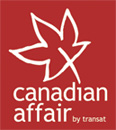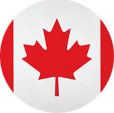Canadian food
One of the best things about visiting somewhere new is the opportunity to sample the cuisine of that place. Whether you’ve got a sweet tooth and are tempted by delicious desserts, or you fancy making the most of the fresh seafood or slow-cooked meat on offer, Canada has lots of things for you to try whilst visiting.
Before you book your flights to Canada, it’s a good idea to have a wish list of things you want to do, places you want to see and food that you’d like to try. But with so much on offer, it can be hard to know where to begin. Discover more about some of Canada’s top culinary delights in this guide.
FAQs
- • What is Canadian food?
- • Traditional Canadian food
- • How much does food cost in Canada?
What is Canadian food?
Canadian cuisine is inspired by the country’s various cultures. Over the years, many immigrants have travelled to Canada, coming from places including Asia, Europe and the Caribbean and sharing their culinary secrets with the locals. As a result, Canada’s colourful cuisine has been described as a smorgasbord of recipes influenced by places across the world. With an amalgamation of flavours, there is something for everyone to enjoy whilst on their Canada holiday.
Dependent on where you visit in Canada, each province will have its speciality. As a result of this, Canadian food is hard to define. From the maritime influence of the British and Irish, where fresh seafood is pulled from the Atlantic to be served with a starchy potato, to the Jewish influence in Montreal, embark on a hunt for your favourite dish when visiting.
Traditional Canadian Food
Whether you’re choosing to eat like a local in Alaska or dive into a dish of poutine in Québec, there are plenty of things to try.
Poutine
Poutine is arguably the country’s most famous dish, as well as one of the simplest. It is believed that the recipe dates back to the 1950s, when a café’s regular customer requested a dish to go, thus cheese was added to a usual serving of chips, with the care owner stating, "ca va faire une maudite poutine!" or, "it will make a damn mess!"
In order to have an authentic poutine dish, the cheese should be from the curd and have a squeak when bitten into. This combined with a well-seasoned gravy and freshly-cooked chips create a combination perfect for any time of day. Although the first creation of the dish contained some of the café’s surplus cheese curd, the gravy was added at a later date to keep the chips warmer for longer.
Nanaimo bars
Whilst browsing what’s on offer from Vancouver’s food scene, the Nanaimo bar, named after its namesake city, is sure to feature. If you ever find yourself in the ferry port of Nanaimo, this no-bake dessert would make the perfect sweet treat to try.
With chocolate ganache, soft custard and a coconut-graham cracker base, this layered dessert was first created in 1952. Originally named the chocolate square, its popularity grew in the years following the Second World War, with its recipe included in a book called the Nanaimo Hospital Cookbook.
In 2006, the Nanaimo bar was named Canada’s favourite confection. Although the original recipe uses a coconut base, variations have been made including flavours such as mint and mocha. Today, they can be purchased across the city, with versions even sold in major retailers such as Starbucks and Costco.
Butter tarts
Flaky pastry tarts filled with a delicious combination of butter, sugar and syrup make up the butter tart—another of Canada’s sweet offerings. Quintessentially Canadian, there are questions as to whether or not a traditional butter tart should include raisins or not, however, the sugary baked good has a cult following, with many attending Ontario’s Best Butter Tart Festival each year to sample one of the 125,000 baked fresh.
Maple syrup
Synonymous with Canada, authentic maple syrup is free of additives, colourings and artificial flavours and has remained undiluted by cane sugar or corn syrup. The art of maple tapping was shared by the Indigenous people of Canada upon the immigration of Europeans. Since then, the maple leaf has gone on to become the country’s national symbol, with pure maple syrup acting as a healthy alternative to processed sugars.
Not only can it be used in cooking, but maple syrup can be added to dishes such as pancakes for an indulgent treat. Alternatively, Québécois children love maple taffy, where boiled maple syrup is poured over snow before eating.
How much does food cost in Canada?
When travelling to a new country, it can be hard to predict your budget for food costs. In Canada, a moderate daily food budget would be around $44 per person, but this is without tipping. For more information about tipping etiquette in Canada, take a look at our Canadian culture guide. This budget has been created based on one adult eating out three times a day so, prices can fluctuate if you visit a local supermarket to pick up food to prepare yourself.





